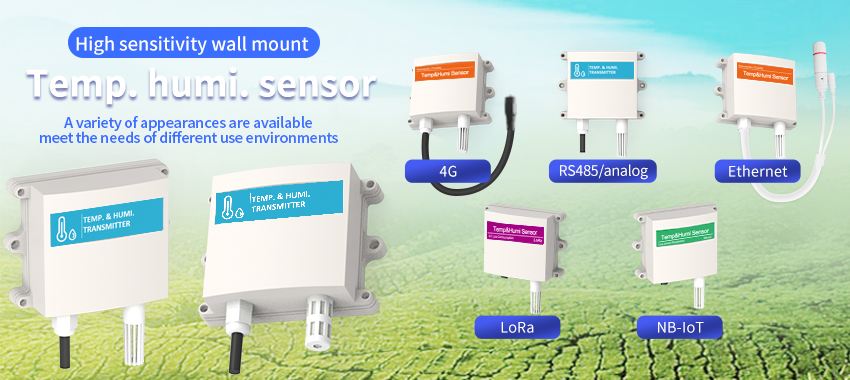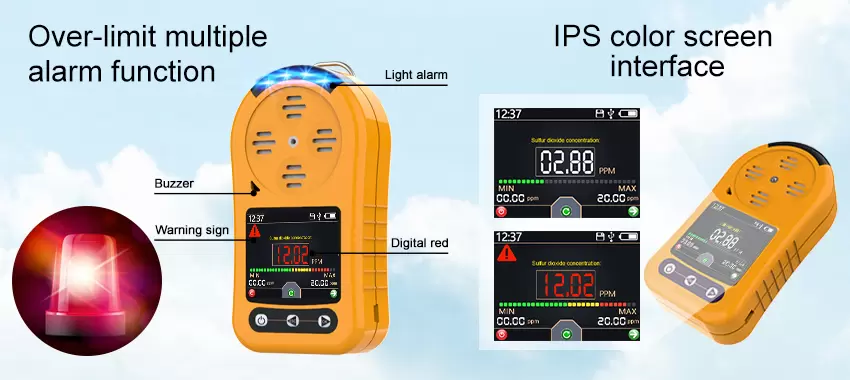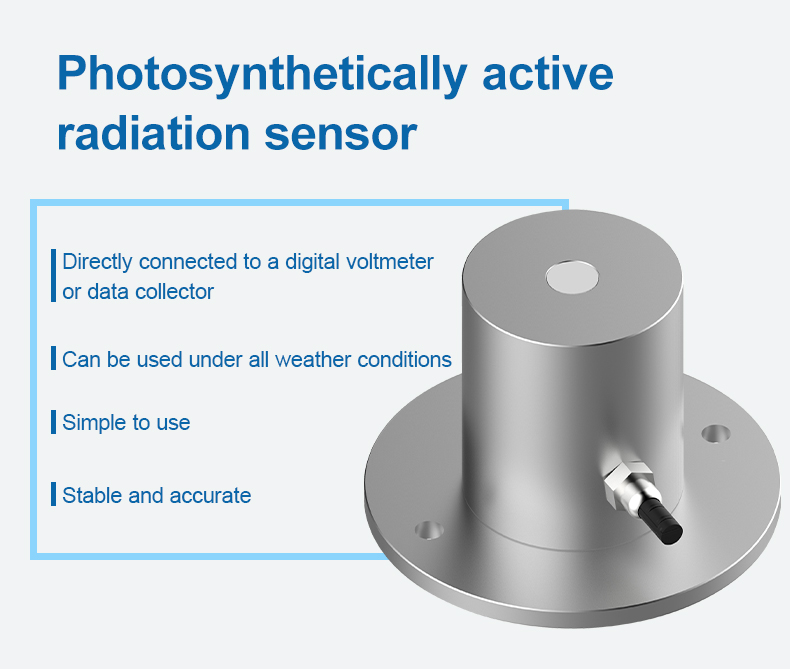Background
Breeding environment monitoring has great influence on the growth and development of poultry. The changes of temperature, humidity, carbon dioxide, ammonia and other factors in the environment will directly affect the growth and reproduction of livestock and poultry. Take raising chickens, for example. The cold winter climate, the reduction of humidity in the air is easy to bring adverse effects on the growth of chickens. Monitoring and scientific management of chicken coop environment through Internet of Things and sensor technology is an important means for farmers to manage the environment of chicken coop scientifically.The monitoring of farming environment is very important.
Sensors for poultry farming environment monitoring solutions:
Temperature and humidity sensor
The changes of temperature and humidity in chicken house affect the healthy growth of chickens. Poultry have no sweat glands. If the temperature rises, so does their own body temperature. They can only regulate their body temperature by breathing, increasing evaporative heat dissipation and drinking more water. This will lead to a decrease in their feed intake and lead to a decrease in their performance. If the temperature in the hen house is too low, the chickens are easy to catch cold, resulting in decreased resistance, causing respiratory diseases or diarrhea.

Chicken coop humidity is too low, will cause dust in the coop, chickens susceptible to respiratory diseases, but also pecking anus phenomenon; However, high humidity is easy to enhance the adjustment ability of poultry, causing various diseases and increases. Weight slows down, egg production drops.
The use of JXCT temperature and humidity transmitter in the hen house can help breeders understand the temperature and humidity environment in the hen house in real time, provide a basis for timely adjustment of environmental conditions in the hen house, and prevent the rise and fall of humidity in the hen house. In this case, to ensure the healthy growth of chickens, but also can further improve the scientific management level of chicken coop, increase the economic benefits of breeding farm.

Carbon dioxide sensor
Effects of carbon dioxide concentration at different stages of incubation on embryo development and chick quality. A gradual increase in CO 2 to above 1% during the first 10 days of hatching had a positive effect on the relative growth of chickens during the first week after hatching, but did not increase slaughter weight. However, chicken embryos can tolerate high levels of carbon dioxide (4%) between day 10 and day 18 of hatching without affecting the quality of the chicks.
After the chicks have been growing for some time, the carbon dioxide concentration in the coop needs to be reduced. Although CO 2 per se is non-toxic, long-term growth in a chicken house with a high concentration of CO 2 May reduce the growth performance and endanger the health of broilers. When the concentration of carbon dioxide in the chicken house is too high, the concentration of oxygen in the chicken house is too low, the lack of oxygen in the chicken house will cause chronic poisoning, so that the chicken appetite decreases, weak body.
Ammonia sensors
Ammonia is also an important part of environmental monitoring in chicken houses. Even if the concentration of ammonia in the coop is as low as 5ppm (hardly detectable by the human nose), it can irritate the respiratory mucosa of chickens, making them more susceptible to disease. Ammonia can dissolve in the fluid around the corns, causing intense irritation. Too high a concentration can blind the eyes of chickens. When the ammonia concentration in the hen house reaches 20ppm for 6 weeks, it will cause lung congestion and edema, and the laying rate of chickens will decrease. When 50ppm is reached, it causes laryngeal edema, necrotizing bronchitis, and lungs in chickens after a few days. Bleeding, decreased respiratory rate and death.
Ammonia sensor is a common tool to measure ammonia concentration in chicken house. Wall-mounted ammonia sensor, measuring range of 0-50ppm, can effectively monitor the ammonia concentration in the environment of the hen house for a long time. At the same time, the measurement value can be set through the monitoring platform. The lower limit is used to automatically control the opening and closing of the vents.

Light has a stimulating effect on the gonads and can affect hormone levels in chickens. It can effectively control the sexual maturation of chickens. Proper light is indispensable for the good performance of chickens. The effect of light intensity and light duration on chickens was the greatest. Too short light time will delay the sexual maturation of chickens in rearing period, while too long light time will lead to earlier sexual maturation. Therefore, in order to stimulate chicken’s appetite, promote growth, improve laying rate, can be appropriately extended light time and light intensity. However, light also has a certain negative effect on chicken. Light can affect the quality of eggs by affecting the morphology of chicken oviduct.
What are the advantages of poultry environmental monitoring solutions?
Real-time monitoring: coop management personnel can view real-time environmental data such as temperature and humidity, light intensity, carbon dioxide concentration, ammonia concentration and hydrogen sulfide concentration in the coop through various terminals on the cloud platform.
Intelligent alarm: Both the monitoring host and cloud platform support setting the upper limit of each environmental factor. If the value of one of the environmental parameters exceeds the limit, the host will display real-time data to alarm through the screen, and the cloud platform will notify the manager of the alarm information display and the mobile phone number added to the platform by phone or SMS through the platform.
Intelligent control: Using advanced industrial automation control technology, once the environmental parameters are determined to exceed the limit, the system will immediately send linkage instructions to the M88 module. If the temperature in the house is too low, it will turn on the heating equipment intelligently, raising the temperature in the house.
Data analysis: Support to view and download the historical data and alarm information records within the time period, and display in the form of curves, so that users look more intuitive.
conclusion
Intelligent poultry environment monitoring system can create a suitable environment for chickens to grow. It has monitoring and control functions. With the help of the Internet of Things and sensor technology, remote management, simple operation, and low cost can be achieved. At present, it is widely used in environmental monitoring of various poultry industries. For different breeding sites, we can provide you with different poultry environmental monitoring solutions, welcome to inquire JXCT.
магазин аккаунтов купить аккаунт
магазин аккаунтов социальных сетей покупка аккаунтов
покупка аккаунтов гарантия при продаже аккаунтов
перепродажа аккаунтов биржа аккаунтов
продажа аккаунтов соцсетей площадка для продажи аккаунтов
профиль с подписчиками биржа аккаунтов
аккаунт для рекламы маркетплейс аккаунтов
Account Trading Service Gaming account marketplace
Account trading platform Ready-Made Accounts for Sale
Account trading platform Account marketplace
Account Buying Service Gaming account marketplace
Buy accounts Accounts for Sale
Accounts for Sale Account Catalog
Account marketplace Account Trading Platform
Buy Pre-made Account Gaming account marketplace
Account Acquisition Account market
Website for Buying Accounts Website for Buying Accounts
Account Purchase Sell accounts
gaming account marketplace account catalog
account exchange account catalog
accounts market ready-made accounts for sale
ready-made accounts for sale account purchase
account buying platform marketplace for ready-made accounts
accounts market account buying platform
account store account trading service
account exchange secure account sales
buy account purchase ready-made accounts
social media account marketplace social media account marketplace
account catalog sell accounts
accounts marketplace secure account purchasing platform
marketplace for ready-made accounts account trading platform
account selling service account market
account selling platform account selling service
account selling platform account trading service
buy pre-made account https://social-accounts-marketplace.org
profitable account sales account trading
account selling platform account trading
account trading platform profitable account sales
secure account purchasing platform sell account
website for selling accounts sell pre-made account
account exchange service account trading platform
sell pre-made account account exchange
account trading service sell accounts
account exchange gaming account marketplace
account acquisition account market
account purchase account buying service
profitable account sales https://accounts-offer.org
account exchange service https://accounts-marketplace.xyz/
secure account purchasing platform https://buy-best-accounts.org
website for selling accounts https://social-accounts-marketplaces.live/
sell pre-made account account market
secure account purchasing platform https://social-accounts-marketplace.xyz
account market https://buy-accounts.space
accounts for sale https://buy-accounts-shop.pro
accounts for sale https://accounts-marketplace.art
profitable account sales https://social-accounts-marketplace.live
account exchange service account market
account market https://accounts-marketplace.online
account sale https://accounts-marketplace-best.pro/
маркетплейс аккаунтов https://akkaunty-na-prodazhu.pro/
площадка для продажи аккаунтов https://rynok-akkauntov.top
продать аккаунт kupit-akkaunt.xyz
маркетплейс аккаунтов https://akkaunt-magazin.online/
маркетплейс аккаунтов https://akkaunty-market.live/
покупка аккаунтов https://kupit-akkaunty-market.xyz